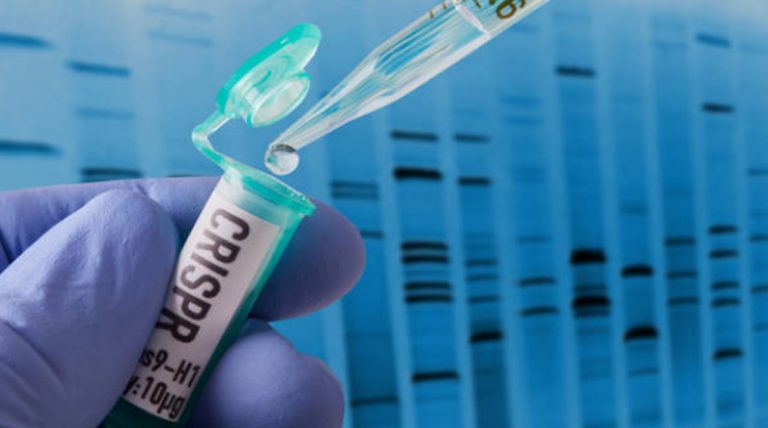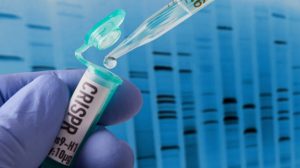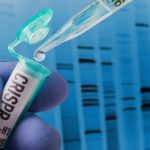
CRISPR (acronym for Clustered Regularly Interspaced Short Palindromic Repeats) is a gene-hacking tool of bacteria
Table of Contents
Have you ever thought of changing yourself for the better — genetically-speaking? Lately, CRISPR company has been selling a CRISPR DIY, i.e. a gene-therapy kit purchasable online. Thus, you could biohack and strike genes at your convenience, practically whenever and wherever — even right at the comfort of your home.
CRISPR – a scientific breakthrough
CRISPR would not be considered as Science’s Breakthrough of the Year in 2015[1] for nothing. Previously, I wrote a blog on how mosquitoes could be wiped out by CRISPR–Cas9 gene drive. I delineated how CRISPR could serve apparently as our “last resort” against one of the deadliest animals on Earth, the mosquitoes.
We all know these minuscule mosquitoes could pose a huge threat to the lives of many. They are deadly not because they can directly kill us but because they are harbingers of pathogens of medically-important diseases such as malaria, dengue fever, Zika disease, lymphatic filariasis, yellow fever, tularemia, chikungunya, and several forms of encephalitis. Recently, researchers identified mosquitoes as carriers of the Keystone virus and the pathogen of Rift Valley fever as well.
In effect, researchers from around the globe have constantly sought for a way to mitigate the disease-transmission spree of these deadly blood-suckers. Just last year, scientists from Imperial College London came up with a means to destroy mosquitoes — by biohacking their DNA using CRISPR technology. Using the CRISPR–Cas9 gene, the scientists suppressed the population of caged Anopheles gambiae mosquitoes (human malarial vector).
In brief, they modified the gene responsible for determining sex in male mosquitoes and turned the male gene dominant. Then, they added these “hacked’ mosquitoes to a caged population of unaltered male and female mosquitoes. As a result, the next generations of females could no longer lay eggs and could not bite. And then by the eighth generation, the population no longer had females [2].
Doing it the CRISPR way
CRISPR (an acronym for Clustered Regularly Interspaced Short Palindromic Repeats) is a gene-hacking tool of bacteria. Hence, we can say that these bacteria are the original biohackers. They use it as a tool to protect themselves from re-invading bacteriophages, similar to our immune system’s adaptive immunity. The gene-hacking tool of bacteria makes use of gRNA and Cas9 enzyme. While gRNA binds to the target DNA, Cas9 cuts the DNA target to disable it. Now, scientists exploit it as a way to splice specific DNA targets and then replace them with a DNA that would yield the desired effect. For instance, CRISPR can correct physiological anomalies caused by gene mutations or defective genes.[3]
First clinical trials
With the potential to treat thousands of genetic disorders, CRISPR has now been making a huge step towards becoming a legitimate, doctor-prescribed treatment. In 2016, the US FDA approved the clinical trial study wherein CRISPR technology was used to treat patients with cancers.[4] Apparently, CRISPR can switch off a gene in immune cells or hack their genes to boost them into combating cancer. Hence, it has the potential to cure certain cancers.
Furthermore, CRISPR seemingly can treat people with inherited blindness. In essence, researchers look through it by injecting it into the patient’s eye with the intent that it will snip out the mutation. If successful, it could be used to treat a wide variety of genetic disorders, such as Duchenne muscular dystrophy, cystic fibrosis, and so on.[5]
According to the bioethicist, Laurie Zoloth from the University of Chicago Divinity School, CRISPR is allowed to be done in clinical trials for these genetic conditions because it is believed not to cause heritable DNA changes. However, precautionary measures are still warranted.[5]
CRISPR DIY biohacking
Aside from its medical potentialities, CRISPR has many other applications. Scientists eye its use in producing more resilient crops, in making biofuel, reviving extinct species, creating new ones, and so on. The fact that living things are in essence made up of genes then the usage of CRISPR could only be limited by one’s imagination. There is even a concern over its use as a means for an ethically-refuted purpose. That is by creating new species designed for biological weapon poised as a treatment that could be purchased online. It might be a stretch. However, the possibility remains.
As noted earlier, its breadth of use is as far as where one’s imagination can reach, especially now that a CRISPR lab kit can now be easily obtained, i.e. simply by ordering online for just under $150.[6] It comes with the instructions. So in an instant, you can become a biohacker, capable of re-engineering DNA at home, with the added benefit of doing it away from the prying eyes of anybody.
CRISPR is undeniable a breakthrough and poises to be the most-promising medical cure of the millennium. It could be the straight answer we need to resolve many genetic problems. However, we should not be too hasty. Care should be taken in utmost regard in order to make sure that no ethical issues and caveats over potential dangers are left unheeded.
— written by Maria Gonzaga
References
- Science News Staff. (2015). And Science’s 2015 Breakthrough of the Year is… ScienceMag.org. Retrieved from http://www.sciencemag.org/news/2015/12/and-science-s-2015-breakthrough-year
- Houser, K. (2018 Sept. 25). SCIENTISTS WIPED OUT A MOSQUITO POPULATION BY HACKING THEIR DNA WITH CRISPR. Futurism.com. Retrieved from https://futurism.com/the-byte/gene-drive-mosquitos-crispr?fbclid=IwAR13KtvXDAeOnL7tjTIOL0-E4Q59HHquKev73tiBfirxypfcNkxeZUNEi7A
- Gonzaga, M. V. (2018). CRISPR caused gene damage? Rise and pitfall of the gene-editor. biologyonline.com. Retrieved from https://www.biologyonline.com/articles/crispr-caused-gene-damage-rise-and-pitfall-of-the-gene-editor
- Reardon, S. (2016). First CRISPR clinical trial gets green light from US panel. Retrieved from https://www.nature.com/news/first-crispr-clinical-trial-gets-green-light-from-us-panel-1.20137
- Saey, T. H. (AUGUST 14, 2019). CRISPR enters its first human clinical trials. ScienceNews.org. Retrieved from https://www.sciencenews.org/article/crispr-gene-editor-first-human-clinical-trials?tgt=nr&fbclid=IwAR0z5dTopHsr7lCIynGxhxUjPmeytHSqU-LVwD1JwzVlzxxXFu4MlsSKHfg
- Al-Ghaili, H. (2019). DIY CRISPR. Retrieved from https://web.facebook.com/ScienceNaturePage/videos/2488389767842767/?t=0
Further reading
- CRISPRs Potential for Reducing Antibiotic Resistance – BioTechniques. (2019, January 16). BioTechniques. https://www.biotechniques.com/crispr/crispr-editing-antibiotics/ (CRISPR system may help fight antibiotic resistance)

